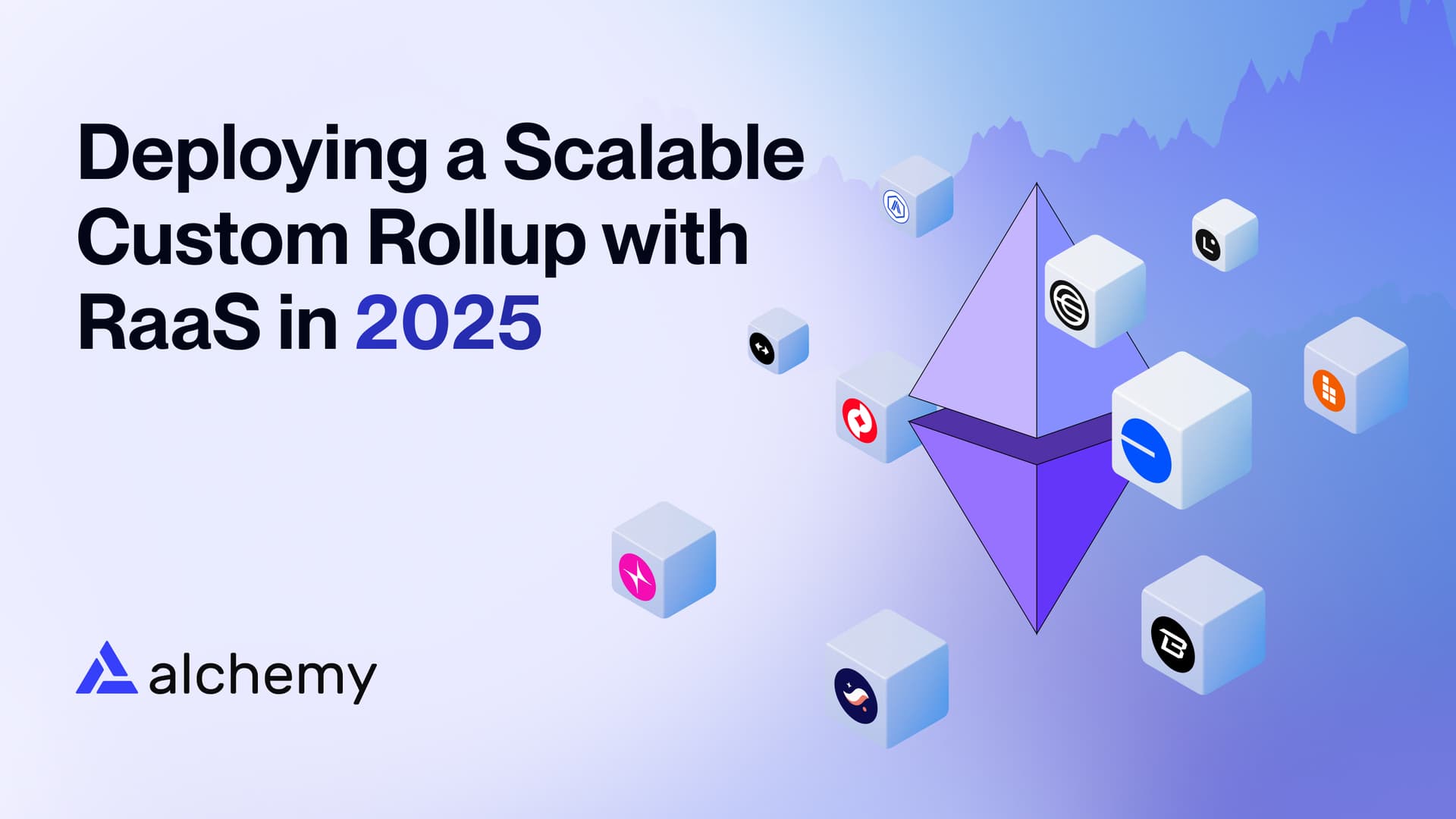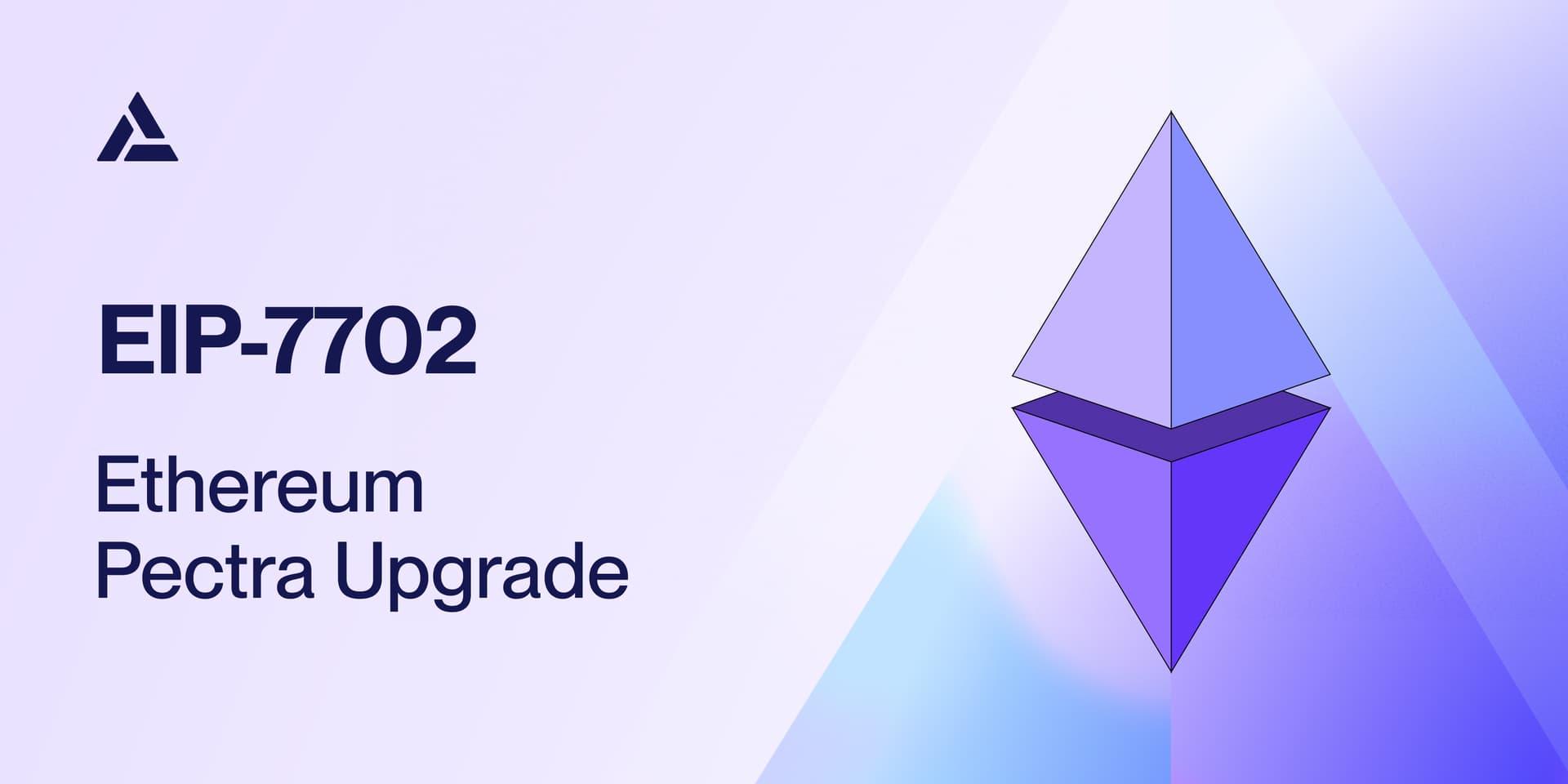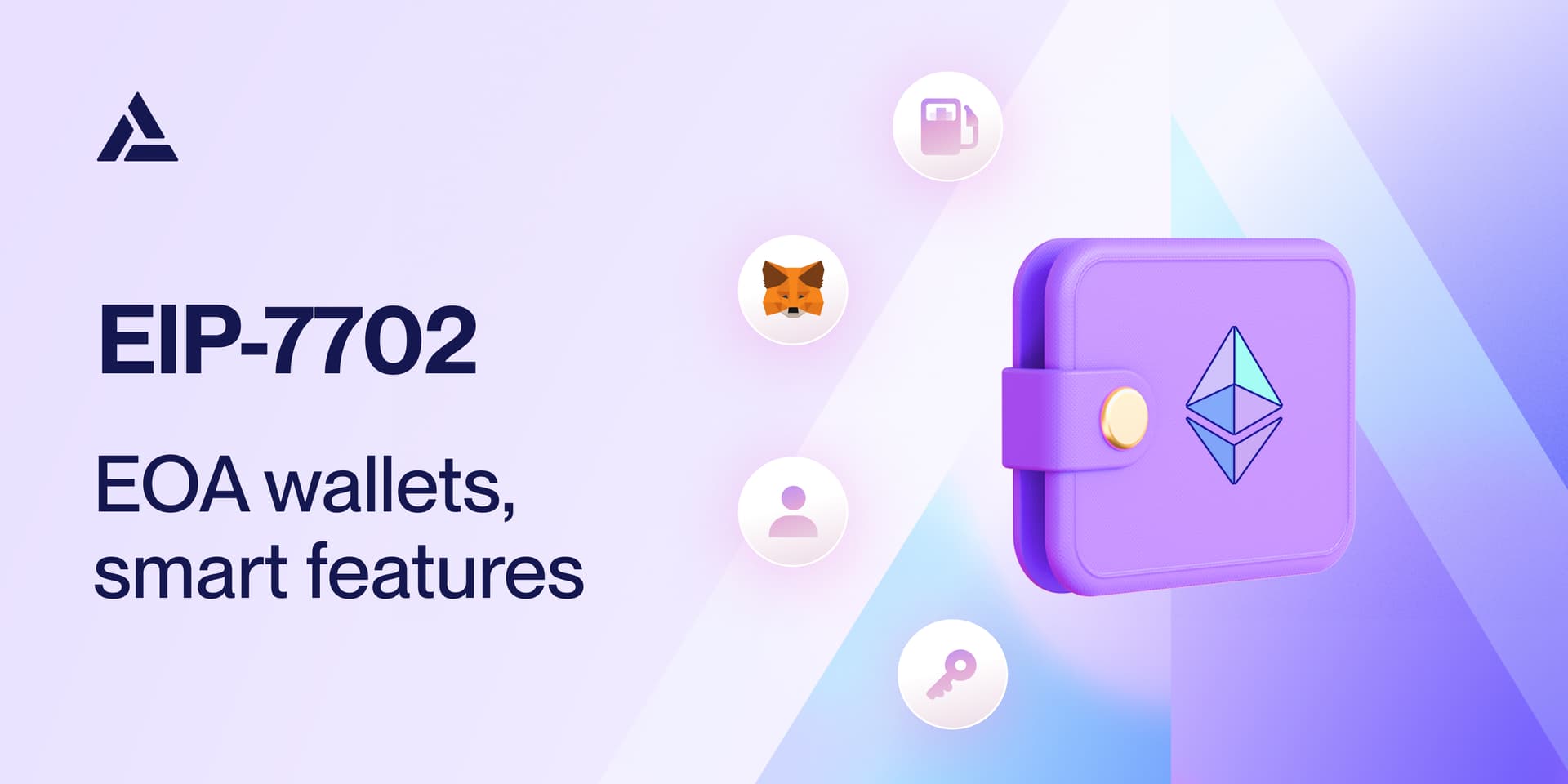What are Zero-Knowledge Rollups (ZK-rollups)?
Author: Alchemy

Blockchains have limited real estate, and as more users come onchain, businesses want to find ways to minimize their transactions costs and onchain footprint. Some optimize their business at the L1, others launch new L1s altogether (hey Stripe). Some build on L2s to minimize their L1 costs, and others launch their own (hey World).
In the landscape of L2s, there are a variety of different L2 designs that are popular today, each with their own set of tradeoffs. One design that has been growing in popularity are rollups, of which there are two main types: optimistic rollups and zero-knowledge rollups. In this post, we’ll explain everything you need to know about the latter.
Whether you're a developer choosing the right scaling solution for your app or just want to understand the market landscape, this guide breaks down everything you need to know about ZK-rollups in plain English.
TL;DR: ZK-Rollups in 2025
ZK-rollups bundle transactions off-chain and prove their validity using zero-knowledge proofs. Those bundled transactions are then broadcasted onchain.
Market momentum: The rollups market today is dominated by optimistic designs (such as Optimism and Arbitrum), but as ZK technology matures, that balance may start to shift.
Key advantage: ZK-rollups offer instant finality (no 7-day withdrawal delays like optimistic rollups).
Major players: Matter Labs (creators of the zkSync framework), Starknet, Polygon Labs (operators of Polygon zkEVM), and Scroll (operates Scroll zkEVM) are leading the zkEVM race. In addition, teams like RISC Zero and OP Succinct are expanding the reach of ZK proving by building integrations into existing frameworks such as Optimism’s OP Stack.
Best for: Zk-rollups are well suited for gaming, DeFi, and other applications requiring fast settlement and privacy.
What Exactly Are ZK-Rollups?
A zero-knowledge rollup (ZK-rollup) is a Layer 2 scaling solution that executes transactions off the main layer 1 chain (e.g. Ethereum), then submits a cryptographic proof (not the raw transaction data) back to the L1 for verification.
Think of it like this: instead of showing a teacher your entire math homework to prove you got the right answer, you provide a mathematical proof that demonstrates you solved the problem correctly without revealing your work. That's the "zero-knowledge" part: proving the validity of the answer/data without exposing the details.
The Core Components of a ZK-Rollup
Every ZK-rollup system has a few core pieces:
On-chain contracts (on Ethereum): there are two contracts on the L1. A main contract, which stores the rollup blocks and tracks state updates, and a verifier contract, which validates zero-knowledge proofs.
Off-chain virtual machine: This machine manages the state of the rollup and executes transactions. It also generates validity proofs for batched transactions. This machine has operators that are called “sequencers”, which sequences and processes user transactions.
Validity proofs: These proofs are the cryptographic evidence that the off-chain computations are correct. These proofs come in 2 flavors: zk-SNARKs or zk-STARKs.
How do ZK-rollups work?
At a high level, rollups (both optimistic and ZK) unlock cheaper transactions and better onchain scalability by combining a large number of transactions into a single transaction that gets mined on Ethereum mainnet (or whichever L1 the rollup is built on). ZK-rollups specifically add cryptographic proofs (zero-knowledge validity proofs) to guarantee the correctness of those transactions, which reduces trust assumptions and can enable faster finality compared to optimistic rollups.
That single transaction takes form as a validity proof, otherwise known as a succinct, non-interactive argument of knowledge (SNARK) or succinct, transparent argument of knowledge (STARK).
SNARKs and STARKs are the same concept as a cryptographic transaction hash. Even though there are many components to a typical Ethereum transaction, they can all be represented in a unique transaction hash without revealing the transaction data, as seen in the example below.

A screenshot of a transaction from Etherscan.
Ultimately, mining this one transaction instead of hundreds of Ethereum transactions is what makes ZK-rollups significantly cheaper than using Ethereum’s Layer 1 chain.
Let's walk through a typical ZK-rollup transaction flow to better understand how these rollups work:
Step 1: Transaction Submission
A user submits a transaction to a ZK-rollup operator (called a sequencer). The execution of that transaction happens off-chain on the Layer 2 network.
Step 2: Batch Processing
The operator collects hundreds or thousands of transactions, executes them in sequence, and bundles them into a batch, the latest version of the rollup state.
Step 3: Proof Generation
The operator then generates a validity proof—a mathematical guarantee that:
All transactions in the batch are valid
The new state root is correct
No double-spending or other fraud occurred in any of that batch’s transactions
Step 4: On-Chain Verification
The rollup’s current end state (as of the latest batched transactions) and the corresponding validity proof get submitted to Ethereum, or whichever L1 chain the rollup is built on. The verifier contract checks the proof in milliseconds and either accepts or rejects the entire batch.
Step 5: Finality
Once Ethereum accepts the proof, all transactions in that batch are final. No waiting periods, no fraud challenges. Just instant settlement.
ZK-Rollups vs. Optimistic Rollups: The Real Differences
As we touched on in the intro, there are 2 main flavors of rollups on the market today. So what is the difference between the ZK-rollup described above and optimistic rollups?

Why ZK-Rollups Are Gaining Momentum
Instant finality is the killer feature. In optimistic rollups like Arbitrum or Optimism, withdrawing funds to Ethereum requires a 7-day challenge period. ZK-rollups eliminate this entirely—your funds are available as soon as the proof is verified on Ethereum.
Enhanced security through math instead of economics. Optimistic rollups rely on validators and economic incentives to catch fraud, but ZK-rollups make fraud mathematically impossible.
Privacy potential: while most current ZK-rollups don't fully utilize the privacy aspects promised by their design (zk tech is very much on the cutting edge and still a work in progress), the underlying technology enables private transactions—something optimistic rollups can't offer.
The Evolving ZK Scaling Landscape
Early narratives often focused on how the biggest barrier to ZK-rollup adoption has been developer experience. Early implementations required learning new programming languages (like Starknet's Cairo) or dealing with limited smart contract functionality.
zkEVMs solve this problem by recreating the Ethereum Virtual Machine within a zero-knowledge environment, allowing developers todeploy existing Solidity contracts with minimal or no modifications. Over time, teams like RISC Zero and OP Succinct are integrating zk proving directly into existing stacks such as Optimism’s OP Stack, which already offers strong EVM compatibility. Finally, zkEVMs have advanced significantly. Projects have steadily improved EVM equivalence.
The zkEVM Compatibility Spectrum

Most projects are converging on Type 2, which offers the best balance of compatibility and performance.
The Major ZK-Rollup Players in 2025
Polygon zkEVM - The ZK Rollup of a Popular L2
TVL: $330M+
Approach: Type-2 zkEVM (near-perfect EVM equivalence)
Proof System: PLONK
Standout Feature: Easiest migration from Ethereum
Use Cases: DeFi protocols seeking familiar development environment
Linea - ConsenSys's Enterprise zkEVM
TVL: $840M+
Approach: Type-2 zkEVM with enterprise focus
Proof System: PLONK with lattice-based cryptography
Standout Feature: ConsenSys ecosystem integration, seamless MetaMask integration
Use Cases: Enterprise DeFi, institutional applications
zkSync Era - A Zk Pioneer
TVL: $280M+
Approach: EVM-compatible using custom zkEVM
Proof system: PLONK (zk-SNARKs)
Standout feature: Native account abstraction and gasless transactions
Use Cases: DeFi protocols like Yearn Finance, FRAX
Starknet - The Cairo-Centric Experience
TVL: $275M+
Approach: Custom VM with Cairo programming language
Proof System: zk-STARKs (quantum-resistant)
Standout Feature: Highest throughput potential
Use Cases: dYdX (perpetual trading), ImmutableX (NFT gaming)
Scroll - An Ethereum Foundation Collaboration
TVL: $180M+
Status: Recently launched mainnet
Approach: Type-2 zkEVM focused on security
Proof System: PLONK
Standout Feature: Built with Ethereum Foundation's privacy team
Use Cases: Security-first applications
Building on ZK-Rollups: Developer Considerations
When to Choose ZK-Rollups
✅ Your app needs instant finality (trading, gaming, real-time applications)
✅ Transaction volume is high with small individual values (micropayments, social apps)
✅ Security is paramount (financial applications, high-value assets)
✅ Future privacy features matter (compliant DeFi, enterprise applications)
When to Stick with Optimistic Rollups
✅ You need perfect EVM compatibility today (complex DeFi protocols)
✅ Development speed matters more than optimal performance (rapid prototyping)
✅ Your users primarily deposit and rarely withdraw (long-term staking, liquidity provision)
Getting Started: Deployment Guide
// Example: Deploying to zkSync Era
import { Provider, Wallet } from "zksync-web3";
import { Deployer } from "@matterlabs/hardhat-zksync-deploy";
const provider = new Provider("https://mainnet.era.zksync.io");
const wallet = new Wallet(PRIVATE_KEY, provider);
const deployer = new Deployer(hre, wallet);
// Deploy with minimal changes from Ethereum
const contract = await deployer.deploy("MyContract", []);
Most zkEVMs support standard tools like Hardhat, Foundry, and MetaMask with minimal configuration changes.
What's Coming Next: The ZK-Rollup Roadmap
2025 Developments to Watch
zkEVM maturation: Type-1 zkEVMs achieving production readiness
Shared sequencers: Decentralized block production across multiple ZK chains
ZK bridges: Native interoperability between different ZK-rollup networks
Privacy features: Actual zero-knowledge transactions for compliant privacy
The Elastic Chain Future
zkSync's vision of an "elastic chain"—a network of interconnected ZK rollups—represents the likely future of blockchain scaling. Instead of competing isolated chains, we're moving toward a unified ecosystem where:
Native interoperability between chains eliminates bridge risks
Shared liquidity across the entire network
Modular scaling where new chains can be added as needed
Why ZK-Rollups Matter for Your Project
ZK-rollups aren't just another scaling solution—they could become the foundation for the next generation of blockchain applications. While optimistic rollups dominated the early Layer 2 era with their simplicity, ZK-rollups are rapidly closing the gap on developer experience while offering superior properties for many use cases.
If you're building an application that needs instant finality, high transaction throughput, or potential privacy features, ZK-rollups should be at the top of your evaluation list. The developer tooling is finally mature enough for production use, and the ecosystem incentives are aligning around ZK-first development.
Ready to start building? The ZK-rollup ecosystem is evolving rapidly, but the core technology is production-ready. Whatever zk stack you choose, Alchemy offers product support for most of them. For a full list of supported chains, check out our chain directory.
Want to Launch Your Own Rollup?
Alchemy's Rollup as a Service platform makes it easy to deploy custom ZK-rollup networks with enterprise-grade infrastructure and developer tools. Learn more here.
Alchemy Newsletter
Be the first to know about releases
Sign up for our newsletter
Get the latest product updates and resources from Alchemy
By entering your email address, you agree to receive our marketing communications and product updates. You acknowledge that Alchemy processes the information we receive in accordance with our Privacy Notice. You can unsubscribe anytime.
Related articles

Deploying Scalable Custom Rollups with a RaaS in 2025
Ambitious teams are increasingly deploying a rollup with RaaS in 2025. Here's why.

EIP-7702: Quick Integration Guide for Ethereum Developers Post-Pectra
Ethereum is on the brink of an important upgrade with EIP-7702. Here's a quick guide on integration considerations for all developers.

What EIP-7702 Means for MetaMask and Other Wallets
Discover how EIP-7702 will impact wallet providers in 2025, what features users will expect, and the recommended implementation for success.